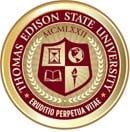Documenting everything you know on a subject or topic seems… an overwhelming task, right?
Wrong.
The truth is, prior learning assessment (PLA) is one of the most rewarding ways to earn credits because it acknowledges and validates the knowledge you have already gained in your lifetime. This is knowledge you already have – whether through work, the military, hobbies, or some kind of training – so there is no textbook or studying required.
You can earn credit for your accomplishments and capabilities by creating a portfolio through the PLA process – a written presentation that you assemble and submit to earn credit for knowledge you have, which is equivalent to what would be taught in a course. The University offers two courses to guide you through this process: PLA-100 Introduction to Prior Learning and PLA-200 Introduction to Portfolio Development. These courses will help you understand your options for earning college credit and teach you the skill of portfolio development both for your educational and future professional use. During PLA-200, you will develop and submit your portfolio for assessment to a Subject Matter Expert who has expertise in the subject area being assessed.
So what do you include in a portfolio? Where do you begin?
After you have assessed if you are a good candidate for portfolio assessment, you’ll create a portfolio organized into the four main components explained below:
The Course Description
Review your job history, hobbies, areas of study or special training, volunteer work or other activities to help you narrow down subjects for your portfolio. Once you have identified the college-level knowledge and skills you possess, and the subject or content area to which you think they are related, you can identify an actual college course description.
You can select a course description from the PLA Course Description Database by searching keywords that best match your prior learning. If you cannot find a match there, you can locate a course description from the University catalog or from another regionally accredited college, and submit the course description for approval to an academic advisor. Ensure the portfolio course you have chosen fulfills your degree requirements, and you can demonstrate you already know the content that would be taught in that course.
Tip: Create or expand upon your existing resume as if you were applying for a job. Detail your skills, experience and knowledge. Be as specific as possible. This exercise will enable you to develop a direction of where to begin.
The Course Outcome/Learning Objectives
After you’ve settled upon your course description, your mentor will then outline the course outcome objectives that will serve as a set of expectations and guidelines that you must demonstrate throughout your portfolio. Through these, your mentor will convey what capabilities and competencies someone would have if they had taken this course. You should be able to detail and support your knowledge of these objectives through your writing, experiences and evidence.
Tip: Because this is knowledge you already have, you must be able to explain what you know, not only through the required writing, but also as if you were conducting an interview. Determine if you could complete the tasks outlined in the course’s learning outcomes, and can articulate that background and knowledge appropriately.
The Narrative
Portfolio development requires a great deal of writing, so college-level writing skills are a must, particularly as you develop your narrative. This component of your portfolio is a student statement that discusses your knowledge of the topics in the course description and correlates these to the course objectives. In the narrative, you should also address how, when, where and why you gained this knowledge, similar to a research paper that is supported by theory or concepts.
Tip: The narrative portion of your portfolio should answer four key questions:
- What do I know?
- How, when, why and where did I learn this?
- How have I or would I apply it?
- How will I prove that?
The Evidence
Treat this section as you would a court case; the better the evidence, the stronger your case. Your evidence may include letters of reference or support, transcripts or certificates of completed training, licenses, performance appraisals from supervisors or samples of your work, and much more. You may even include video or audio recordings, newspaper articles or websites demonstrating your experience and skills.
Tip: Pay attention to the details. Your evidence and/or documentation must demonstrate and support all of the learning you describe in your narrative. The learning outcomes and course objectives should be reflected in your evidence. To cover theory, concepts and context for your experience, one of the most effective items is an informal, annotated bibliography. You can supply a list of publications that include the title of the book or article, the name of the author(s), its year of publication, and a few sentences that summarize the relevant contents of the publication.
Have you gone through the PLA process? What tips or advice can you offer students pursuing their own portfolios?
Written by Thomas Edison State University

